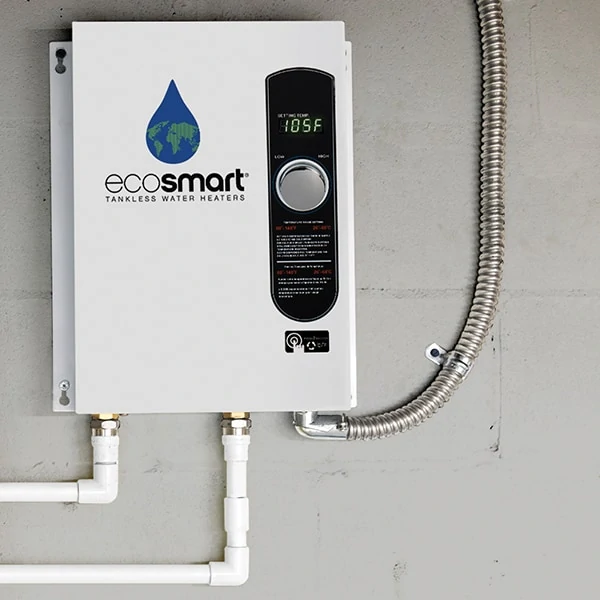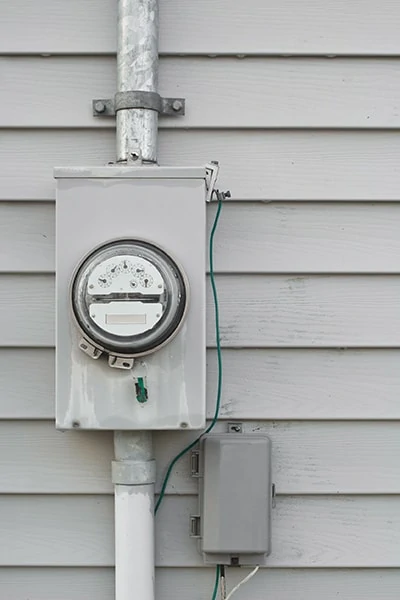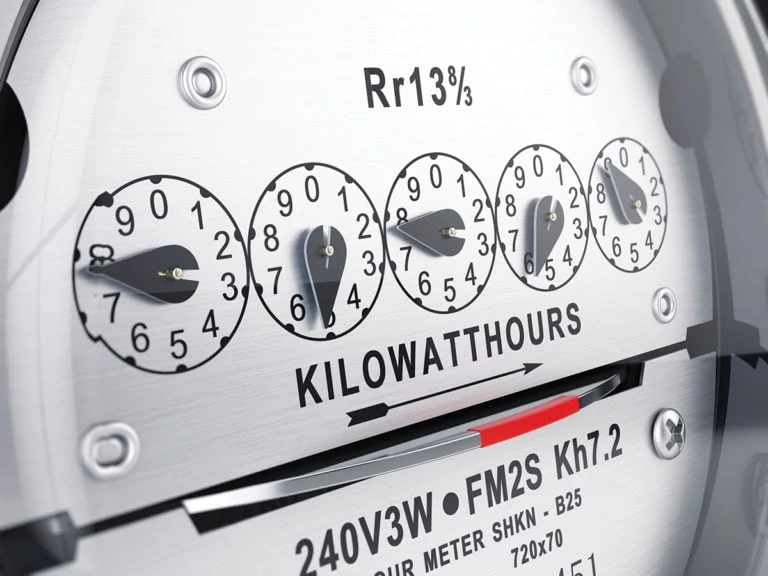Is a Tankless Water Heater right for Your Home?
Tankless water heaters offer an energy-efficient option for homeowners, and some new models can reduce home water-heating costs by up to 50 percent. Tankless heaters offer on-demand convenience, because these heaters don’t have a holding tank. Water is heated on an as-needed basis, not heated and stored for hours like a traditional tank. This reduces energy loss from sitting water and also guarantees a warm shower, even if you’re the last person in line. Plus, tankless heaters are powerful, yet compact. Most can be wall-mounted inside or outside the home. Although sizes vary, the average tankless unit is about 24 inches high and 18 inches wide—significantly smaller than the traditional 40-gallon tank. Plus, with today’s tankless units you can dial in the water temperature with a digital controller.
Thanks to advancements in design and technology, some units even offer self-modulating “smart” technology. For example, the EcoSmart tankless water heaters from Rheem will adjust how much energy input is needed based on how much hot water is demanded.
Both gas-fired and electrical water heaters are available in a wide range of sizes. Note that gas-fired tankless heaters require the exhaust and air-intake to be vented outside, separately from all other appliances, which can complicate installation.
Electric tankless heaters require no venting, but they do require significant available power supply. For example, the EHT staff recently explored installing a new tankless heater at one of our project houses. The home in question had a separate mother-in-law suite in the basement, which was operating one of two separate tank-style heaters to accommodate the different dwellings. The downstairs suite seemed like a prime candidate for an EcoSmart Eco-18 unit, sized for two bathrooms for up to three people. However, after consulting with an electrician, we determined the tankless unit was not a good fit for the home.
Why?
Because, although the electric tankless units do conserve energy when the heating coils aren’t active, once they do activate, they draw a great deal of electrical power in short intervals. The Eco-18 model required two 40-amp breakers for installation, and it had a 75-amp draw. According to the electrician we consulted, the house in question was already approaching maximum 200-amp electrical capacity before adding the new tankless unit. He explained that if the tankless unit were to kick on at the same time as another high-amp appliance, such as an air-conditioner, then the lights in the house would begin to flicker and the electrical supply would be too strained to power everything.
“Okay,” we said to the electrician. “How much would it cost to increase the electrical capacity of the home?”
He answered, “thousands,” and then went on to grouse about municipal permits, city inspectors, etc.
So, while the new electric units can indeed offer cost savings, they require a large amount of available electric current, and you should be aware of your capacity when considering one for your home.
Evaluating a Home’s Electrical Supply
Homeowners should have an electrician evaluate their home’s available power supply before selecting a new electric tankless heater—particularly for the larger sized units—to ensure it will be an appropriate fit.
The amperage of a house’s electrical service determines how many appliances you can run at the same time. A 200-amp service allows operation of multiple appliances at once, while a 60-amp service won’t provide enough power to run an electric hot water heater, air conditioner and hair dryer simultaneously.

The size of your electrical service, can be determined by examining the main components of your house’s electrical distribution system—the wire, the conduit, the meter, the panel and the main breaker. The electrical conduit is a pipe that enters the house either from the underground main electric wire or from above-ground service. A 2-inch conduit can hold wire for 200-amp service; 100-amp service needs a 1-1/4-inch conduit, and 60-amp service uses a 1-inch wire. However, many conduits are oversized, so a 2-inch conduit might hold a 60-amp service.

Visible service wire can also provide an indication of electrical capacity. Six-gauge copper wire indicates 60 amps, four-gauge indicates 100 amps, 2-gauge indicates 125 amps, 1-gauge indicates 150 amps, and 2/0 gauge indicates 200 amps. (Warning: Do not touch any exposed wiring.)
Also, the electrical meter might have the amperage rating printed on its face or body. On your electrical panel, look for a label that indicates its rating, which might have been provided by the manufacturer or attached by an upon installation.
The amperage rating on your main breaker or fuse should also give some indication. The main breaker will be the largest breaker you have and should have its capacity written on it or adjacent to it.
We should stress that it’s not advisable for a homeowner to be measuring the wires in their breaker panel. The most accurate way to determine the amperage rating is to consult a professional electrician to look at your electrical meter and the labels on your main breaker or fuse. Sometimes the wire size might indicate one thing while the actual amperage is different coming from the source.
Your electrician should compare all the information to determine the lowest amperage rating. The lowest number is your home’s electrical service capacity, and this information will help you select a tankless electric water heater that makes sense for your home.
Side Note
EcoSmart Tankless Electric Water Heaters
Each EcoSmart tankless electric water heater provides consistent and endless hot water and has self-modulating technology that will adjust how much energy input is needed based on how much hot water is demanded. This allows homeowners to save up to 50 percent on water heating costs compared to a regular water storage tank. The heaters provide digital temperature settings in increments of 1 degree, so you simply set it and forget it. All EcoSmart electric tankless water heaters come with an automatically resettable thermostat as opposed to a manually resettable thermostat. The integration of all components and quick connections are designed to simplify installation and usage. Learn more at www.ecosmartus.com.




